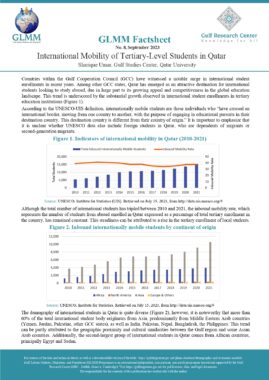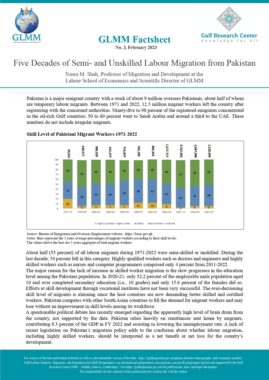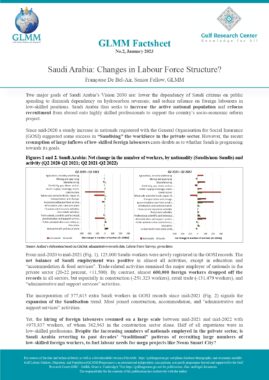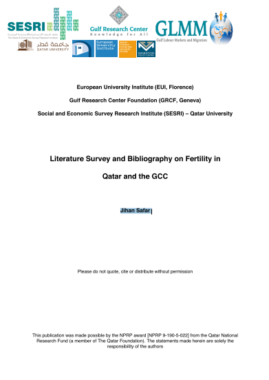Bahrain: Employed population (15+ years old) by nationality (Bahraini/Non-Bahraini) sex and highest educational level (1991)
| Bahraini | Non-Bahraini | Total | |||||||
| males | females | total | males | females | total | males | females | total | |
| Illiterate/ Read only | 7,183 | 467 | 7,650 | 11,188 | 1,799 | 12,987 | 18,371 | 2,266 | 20,637 |
| Read & Write | 8,315 | 280 | 8,595 | 27,441 | 5,415 | 32,856 | 35,756 | 5,695 | 41,451 |
| Primary | 9,875 | 415 | 10,290 | 19,485 | 1,989 | 21,474 | 29,360 | 2,404 | 31,764 |
| Preparatory | 8,541 | 563 | 9,104 | 13,076 | 1,919 | 14,995 | 21,617 | 2,482 | 24,099 |
| Above Preparatory | 1,408 | 114 | 1,522 | 4,677 | 672 | 5,349 | 6,085 | 786 | 6,871 |
| Secondary | 19,129 | 5,361 | 24,490 | 20,646 | 4,218 | 24,864 | 39,775 | 9,579 | 49,354 |
| Above Secondary / Diploma | 3,252 | 2,186 | 5,438 | 4,784 | 2,160 | 6,944 | 8,036 | 4,346 | 12,382 |
| BSC or BA. | 4,403 | 2,945 | 7,348 | 7,936 | 2,558 | 10,494 | 12,339 | 5,503 | 17,842 |
| High Diploma | 1,097 | 641 | 1,738 | 1,714 | 434 | 2,148 | 2,811 | 1,075 | 3,886 |
| Master’s | 593 | 157 | 750 | 1,206 | 235 | 1,441 | 1,799 | 392 | 2,191 |
| Doctorate | 218 | 50 | 268 | 350 | 54 | 404 | 568 | 104 | 672 |
| Unknown | 69 | 6 | 75 | 568 | 278 | 846 | 637 | 284 | 921 |
| Total | 64,083 | 13,185 | 77,268 | 113,071 | 21,731 | 134,802 | 177,154 | 34,916 | 212,070 |
Source: Central Informatics Organisation (CIO) – Bahrain
ANNEXED NOTE
1. Technical Notes and Definitions
| census year | reference period | implementing institution | implementation method | population covered | |
| 1981 | November 16 | Ministry of Finance Statistics Department |
field interviews | de jure, de facto | all individuals (nationals and non-nationals): 1- present within the country’s borders during time of reference; 2- residing in Bahrain irrespective of where are they at census times |
| 1991 | April 6 | Central Informatics Organisation (CIO) | field interviews | ||
| 2001 | April 7 | field interviews; characteristics of population in collective households (among which labour camps) was obtained from sponsors | |||
| 2010 | April 27 | based on administrative records | |||
Nationality of the person is defined by the passport used to enter the country. A Non-Bahrainis is considered as such depending on the passport used to enter the country (or obtain the visa).
Period of reference for employment refers to the 7-days period prior to the survey.
Population of reference in table: all employed individuals (nationals and non-nationals) aged 15 and above
Overall definitions for the Censuses of 1991 are not available on the CIO website. However, the 2001 censuses used the following definitions:
Employed population includes population in the following categories:
Employer is defined as a person who operates his / her own economic enterprise or engages independently in a profession for trade and hires one or more employees.
Self-Employed is defined as a person who operates his / her own economic enterprise or engages independently in a profession or trade and hires nobody.
Paid Employee is defined as a person who works for a public or private organization and receives regular wages/salary whether in cash or in kind.
Unpaid Employee is defined as a person works for an enterprise, usually owned by some of his relatives, without receiving regulat wages/salary whether in cash or in kind.
Primary education comprises a total of six grades (1-6) and is generally the beginning of systematic apprenticeship of reading, writing mathematics and other subjects.
Preparatory education comprises a total of three grades (7-9).
Secondary education comprises of the last three grades of the schooling system (10-12) prior to graduation.
Classification of educational levels are encoded in line with the International Standard Classification of Education (ISCED) of the United Nations Educational, Scientific and Cultural Organization (UNESCO), as noted by the CIO.
2. Institution which provides data
Central Informatics Organization, known prior to 2001 as the “Central Statistics Organisation” under the Ministry of Cabinet Affairs.
3. Data availability
Figures and results reported here are available on the Central Informatics Organisation (CIO) website. For Arabic version: (http://www.cio.gov.bh/cio_ara/default.aspx). For the English version: (http://www.cio.gov.bh/CIO_ENG/Default.aspx)
The CIO often provides its figures and estimates through tables in PDF format.
Figures of this 1991′ census table can be found in the Statistical Abstract 2000, Labor Force section: (http://www.cio.gov.bh/CIO_ENG/SubDetailed.aspx?subcatid=172)
General information on the classifications used under the CIO can be found: (http://www.cio.gov.bh/cio_eng/SubDetailed.aspx?subcatid=278)
Information on the ISCED educational calassification under the UNESCO can be found: (http://www.uis.unesco.org/Education/Pages/international-standard-classification-of-education.aspx)
Date of access: July 2014
Similar Posts:
- Bahrain: Employed population (15+ years old) by nationality (Bahraini/Non-Bahraini) sex and highest educational level (2001)
- Bahrain: Employed population (15+ years old) by nationality (Bahraini/Non-Bahraini), employment status and sex (2001)
- Bahrain: Employed population (15+ years old) by nationality (Bahraini/Non-Bahraini), sex and highest educational level (1981)
- Bahrain: Employed population (15+ years old) by nationality (Bahraini/Non-Bahraini), employment status and sex (1991)
- Bahrain: Employed population (15+ years old) by nationality (Bahraini/Non-Bahraini) at dates of census (1981, 1991, 2001, 2010)
Tags: Bahrain, Education, Employer, Employment, Female Employment, Foreign Labour, National Labour




































































